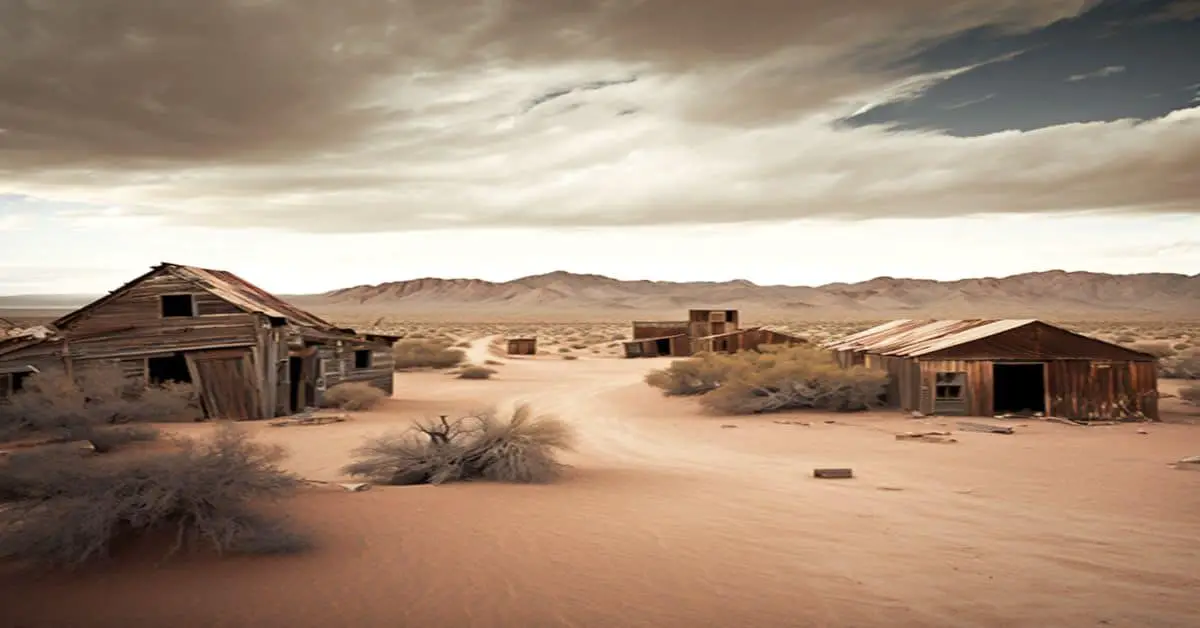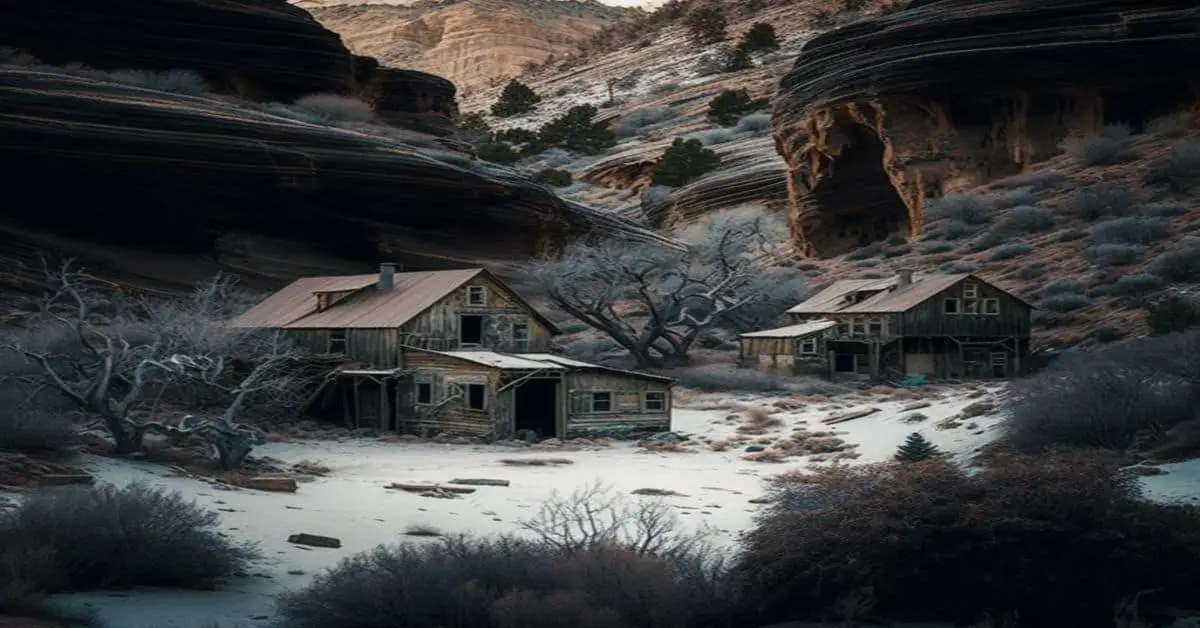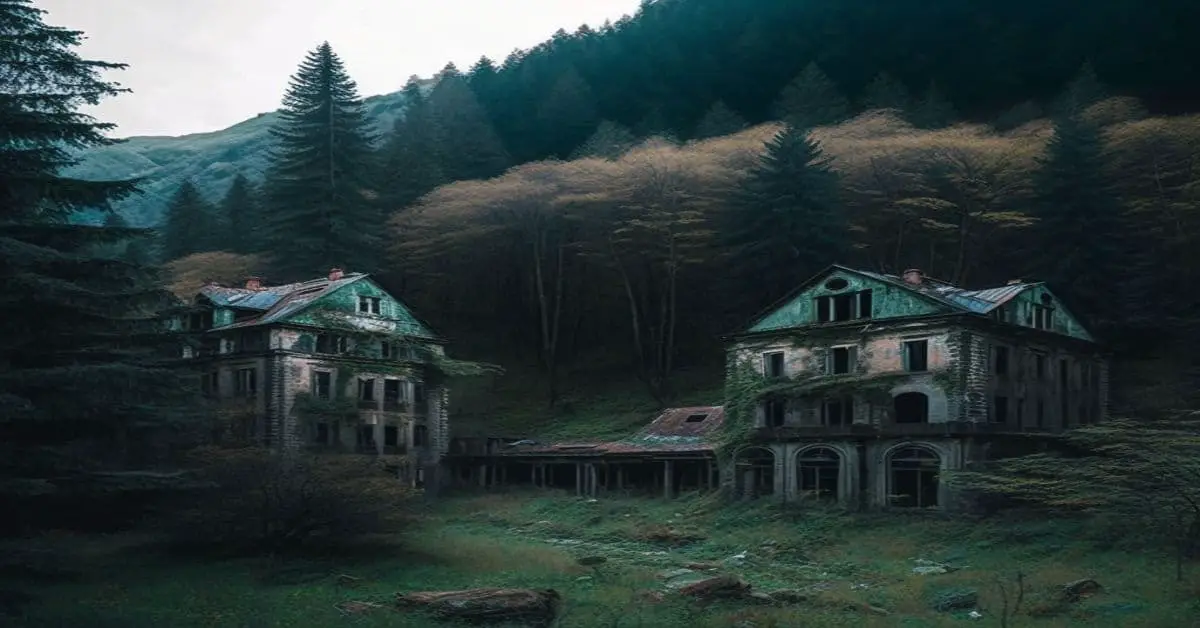Nestled within the Sierra County of California, Forest City is a testament to the gold mining boom of the 19th century. Once a bustling town that attracted a company of sailors who found gold in the region, Forest City grew rapidly, with miners tunneling into mountains to the south after working out streams, bars, and banks around the town.
However, the fate of Forest City took a turn when a rich strike was made in the Bald Mountain district in 1870, causing the entire population of Forest to flock to the new camp of Alleghany.
Today, Forest City stands as a quiet hamlet with a few empty stores still standing along the main street and a little Catholic Church crowning the hill above, a mere shadow of its former glory.
This article explores the history, features, and current status of Forest City, a California ghost town that reminds of the region’s rich mining history. As we delve into the past of this once-thriving town, we will learn about the origin and evolution of the town, the various architectural features that define the town’s character, and the current state of the town.
Through this article, readers will gain a deeper understanding of the role that Forest City played in California’s mining history and its decline’s impact on the region.
Key Takeaways
- Forest City was a bustling mining town that attracted sailors who found gold in the region.
- The town’s decline began when a rich strike was made in the Bald Mountain district in 1870, causing the entire population to flock to the new camp of Alleghany.
- Forest City still holds a unique place in California’s history and offers a glimpse into the past for those who visit.
- The Sierra County Historical Society has been working to preserve the remaining buildings and artifacts in Forest City.
History and Origin
The history and origin of Forest (also known as Forest City), a ghost town in Sierra County, California, dates back to 1852 when a company of sailors discovered gold in the area. The place began to look like a town, with the first store/trading post being built. It was sometimes called by the Indian name Yomana, designated as a high bluff above town.
Forest City was also the name given by Mrs. Forest Mooney, wife of Captain Mooney, who signed her journalistic contributions as Forest City.
As miners worked out streams, bars, and banks around Forest City, they began to tunnel into mountains to the south. The name of one of these tunnels, the Alleghany, was given to a flourishing camp on the opposite side of the mountain where paydirt was found in 1855.
The town of Alleghany increased in importance so rapidly that the entire population of Forest flocked to the new camp, leaving the old place an empty shell. When a rich strike was made in the Bald Mountain district in 1870, Forest City briefly regained its importance before relapsing into the quiet hamlet it is today.
Features and Architecture
Several steep-roofed houses in the canyon area of the abandoned settlement give the impression of an Alpine village, as if the town was transplanted from Europe to the Sierra Nevada mountains. These houses still standing along the main street are a testament to the town’s past and add to its unique character. The houses are built with steep roofs to prevent heavy snow from accumulating and caving in the roofs during winter months.
The little Catholic Church that crowns the hill above the town is another example of the town’s architecture. Its simple yet elegant design is reminiscent of the small, quaint churches that can be found in the European countryside. The combination of the steep-roofed houses and the little church gives the town a distinct Alpine flavor, which is a rarity in California. Despite being a ghost town, Forest certainly has a unique charm that is worth exploring.
Current Status
The former settlement known as Forest City in Sierra County remains uninhabited and is classified as a ghost town. Despite being abandoned for over a century, the town still stands with a few empty stores along its main street and steep-roofed houses on either side of the canyon, giving the town an Alpine flavor. The little Catholic Church still crowns the hill above, serving as a remnant of the town’s past.
However, there have been some revitalization efforts in recent years to boost the tourism potential of the ghost town. The Sierra County Historical Society has been working to preserve the remaining buildings and artifacts, with plans to develop a walking tour of the town. The town’s annual Forest City Daze celebration also attracts visitors with historic reenactments, music, and food.
While the town may never return to its former glory, it still holds a unique place in California’s history and offers a glimpse into the past for those who visit.
Frequently Asked Questions
What was the population of Forest City at its peak?
Once a bustling mining town, Forest City reached its population peak during the mid-1800s gold rush era. Economic impact led to a rapid growth in population, though the exact number at its peak is unknown.
What were the primary industries in Forest City besides gold mining?
Besides gold mining, logging and agriculture were Forest City’s primary industries. There is potential for tourism, but it may have a negative impact on the local environment.
What is the current condition of the mining tunnels in the mountains surrounding Forest City?
The condition of the mining tunnels in the mountains surrounding Forest City is unknown, as there is no recent information about exploration methods. However, these tunnels hold historical significance as they were once a major source of gold mining in the area.
Are there any plans to restore or revitalize Forest City in the future?
No known plans for revitalization of Forest City have been reported. Community involvement may be necessary for any potential revitalization efforts, but currently the town remains a ghost town with few remaining structures.
Has Forest City been used as a filming location for any movies or TV shows?
Forest City has been used as a filming location for a few productions, including the 1947 film “California Firebrand”and the TV series “Death Valley Days.”However, there are no famous productions associated with the ghost town.


